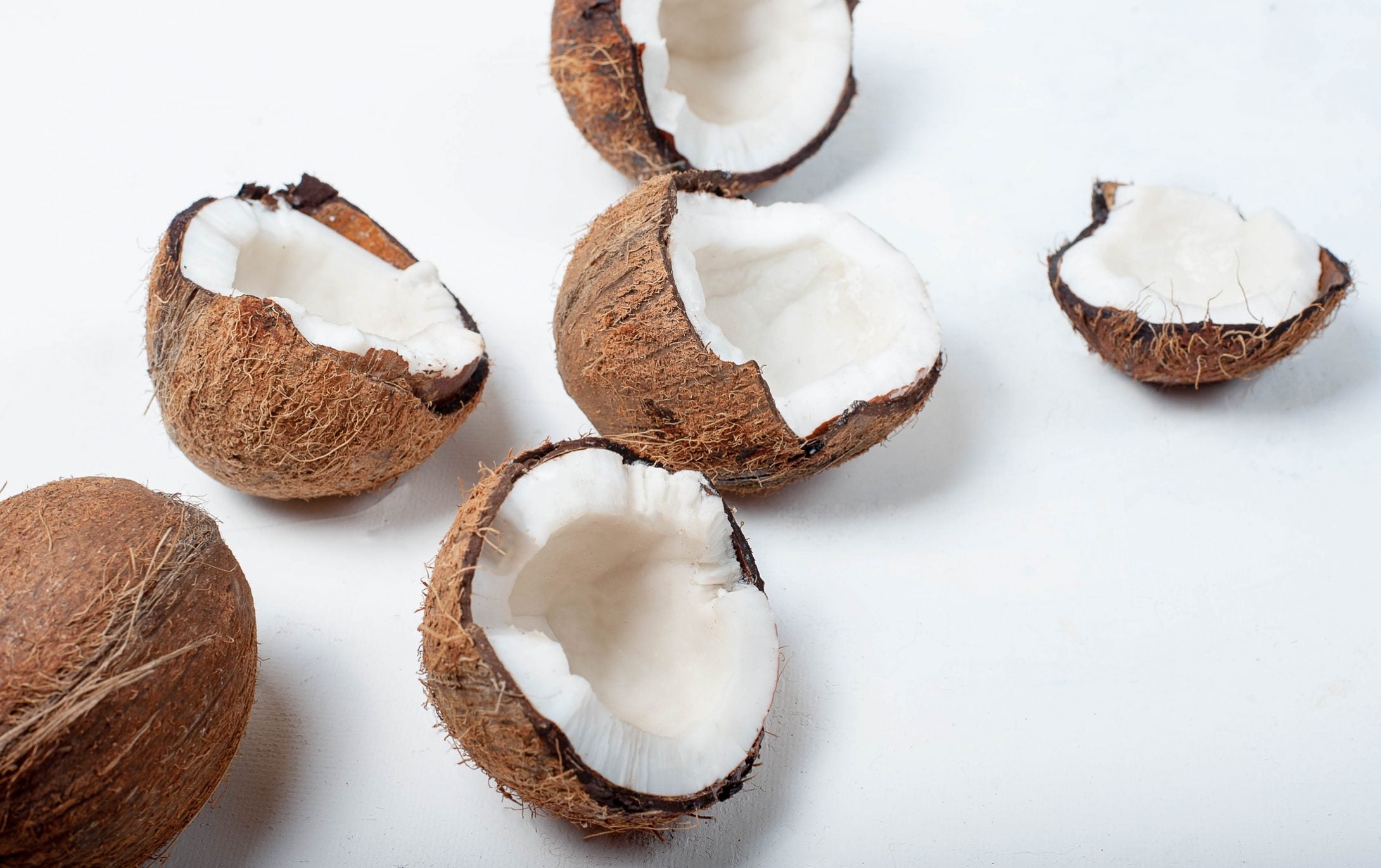Coconuts about Christmas: Baking with the Organic Essentials
What’s your favourite thing about Christmas? For many, the festive food is up there. There’s always an abundance for the sweet-toothed, with traditional treats from mince pies to Christmas cake in seemingly endless supply.
The dependability of these traditions brings comfort and joy, certainly, but how well do they sit in today’s more conscious foodscape? With more and more of us considering the role of our diets in our health and that of the planet, the annual bake-up using refined sugars, flours and animal products might seem a little outdated.
So, what’s the answer?
For us, it’s in the shape of a beautiful spherical fruit with an unmistakable hairy brown coat, rich white flesh and a nutritious water all its own. You got it…The coconut!
‘Coconut palm’ in Sanskrit is ‘kalpa vriksha’, which means 'tree that gives all that is necessary for living'. Accordingly, this not-so-humble fruit has all the answers to the conscious baker’s woes. Flour, milk and oil can be derived from its nutritious meat and sugar from the palm. If the coconuts are grown organically, that means all those ingredients will be organic, too.You can have healthier versions of your traditional Christmas favourites, simply make them with slightly less traditional ingredients.
Here’s the why and how…
Coconut Flour
The benefits:
The interest in grain-free diets has exceeded the bounds of the coeliac community, with many health-conscious eaters now avoiding gluten, too. Coconut flour is a nutritious alternative to grain-based flours, providing high levels of protein, fibre and fat in the place of some of those carbohydrates. The result is a more filling flour, which also provides lauric acid (which supports the immune system, skin and hair), manganese, vitamin C and thiamine.How to use:
- Coconut flour is super absorbent! 1/4 - 1/3 cup coconut flour replaces 1 cup grain-based flour.
- You need 6 eggs (or the equivalent in flax/chia gel or tapioca flour) for every cup of coconut flour to bind the recipe.
- Add one cup of fluid, such as coconut milk, for every cup of coconut flour.
- Sieve and thoroughly beat coconut flour into your recipe to prevent clumps.
- To add moisture, consider adding pureed fruit or vegetables.
Our delicious Christmas Morning Pancakes, here.
Coconut Sugar
The benefits:Unlike cane sugar and high-fructose corn syrup, coconut sugar retains nutrients from the coconut palm, including fibre, iron, zinc, calcium, potassium and antioxidants. The fibre might account for its low glycaemic index (the measure of the degree to which a food causes the blood sugar level to spike), which is the opposite of cane sugar. It’s high in calories, so great for energy when consumed in moderation. It has a low melt temperature and high burn temperature, so it’s perfect for everyday baking.
How to use:
- Coconut sugar is not as sweet as cane sugar, but instead has a rich, butterscotch flavour, which means it can often be used in a quantity reduced by ¼.
- When you reduce the quantity of coconut sugar in a recipe, be sure to cream the fat and sugar for longer.
These amazing Christmas Caramelised Nuts, here.
Coconut Oil
The benefits:Softly sweet and spreadable at room temperature, coconut oil is a wonderful replacement for butter and other fats. It is a rich source of energy, lipids and nutrients including vitamins E and K, calcium, zinc, and iron. It is notoriously antimicrobial, antifungal and antiviral, especially in its raw virgin form.
How to use:
- Substitute it 1:1 for butter, spread or other oils.
- The ‘cuisine’ version is odourless and brilliant for high-temperature frying thanks to its high smoke point.
Our recipe for perfect Mince Pies: here.
Coconut Milk
The benefits:While coconut milk is not as high in calcium as dairy milk, it makes up for it in phosphorus, which is also a great bone-building nutrient. It also contains magnesium, manganese, lauric acid and selenium, among many others! It’s rich and sweet and lends a beautiful creamy feel to dishes.
How to use:
- The milk does carry the distinctive taste of coconuts. We think there’s little this flavour doesn’t go well with, but you can judge for yourself whether you think it will blend well in the flavour profile of your recipe.
- Coconut milk at room temperature substitutes perfectly at a 1:1 ratio with pouring cream.
- If you’re replacing milk, you can water down coconut milk slightly to thin it, or else refrigerate the can overnight and use the fluid.
- If you need whipping cream, you can whisk up the set cream from your refrigerated can. We’d recommend an electric beater as it can take some time!
Try:
The most indulgent Christmassy Hot Chocolate, here.
You can find organic versions of all these coconut goodies here. Wishing you a coconutty Christmas from all of us here at Biona!











